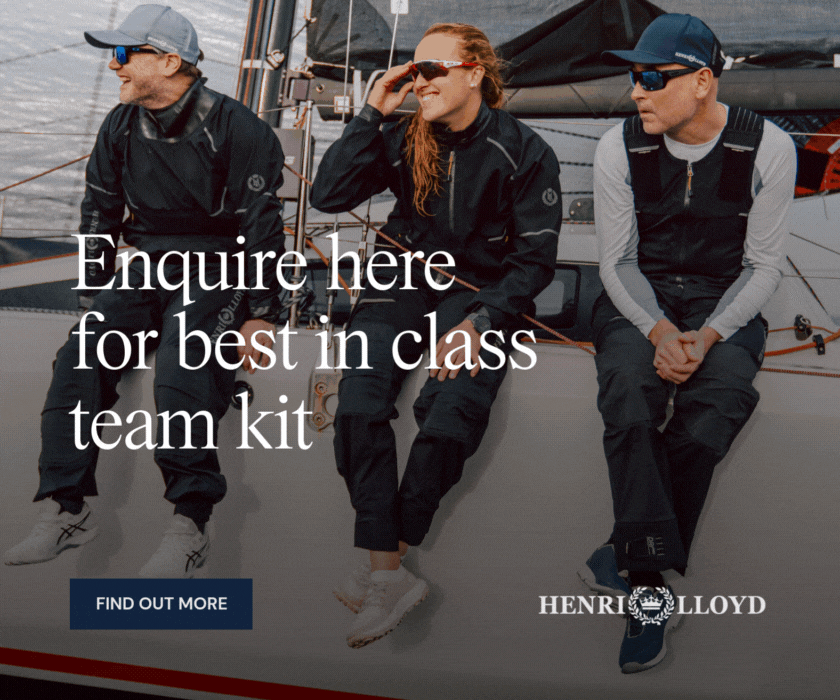
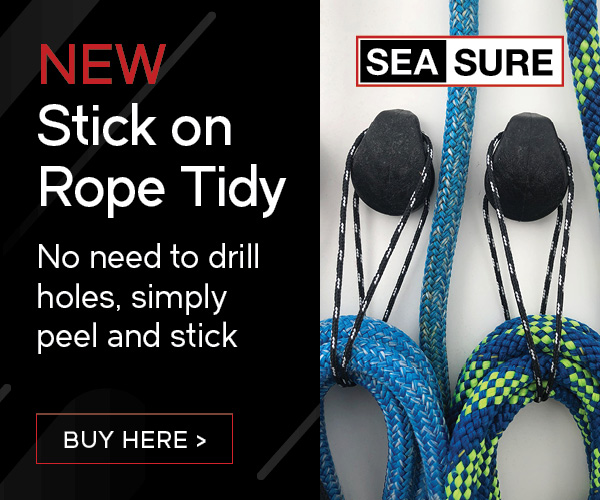
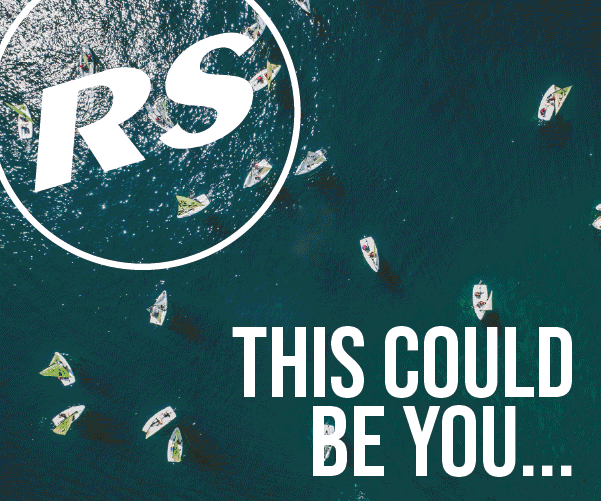


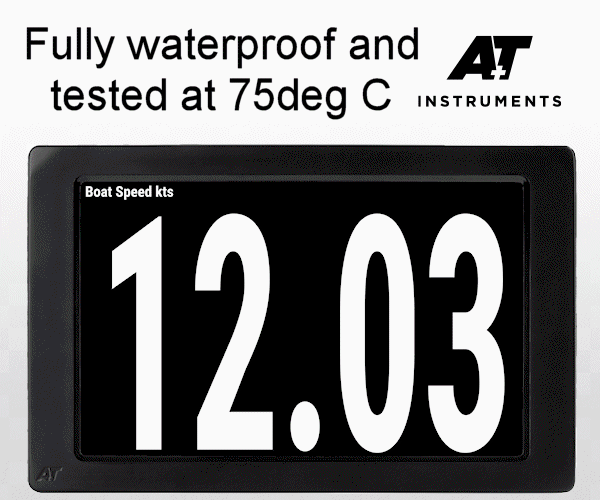
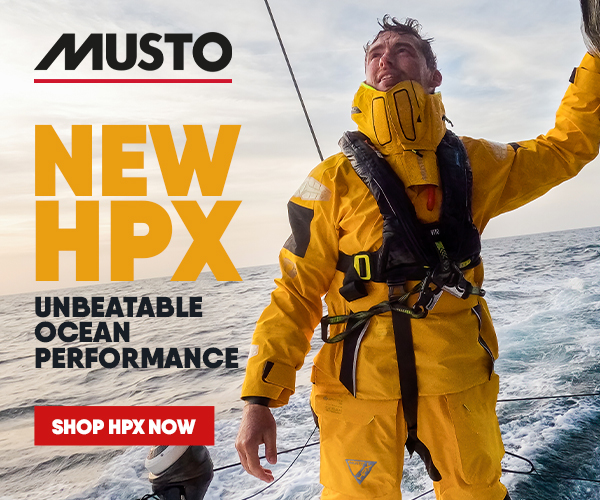
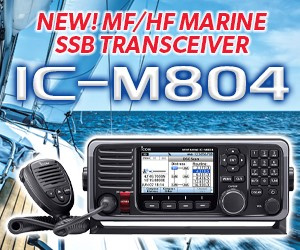
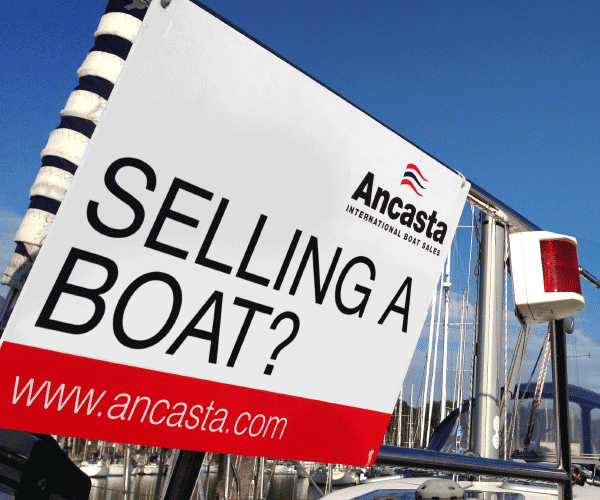
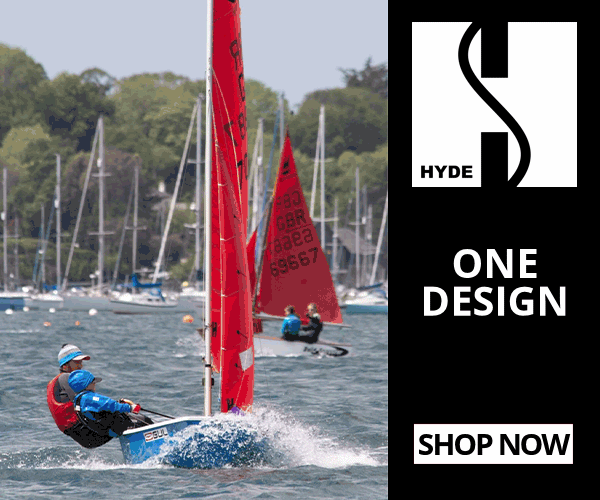

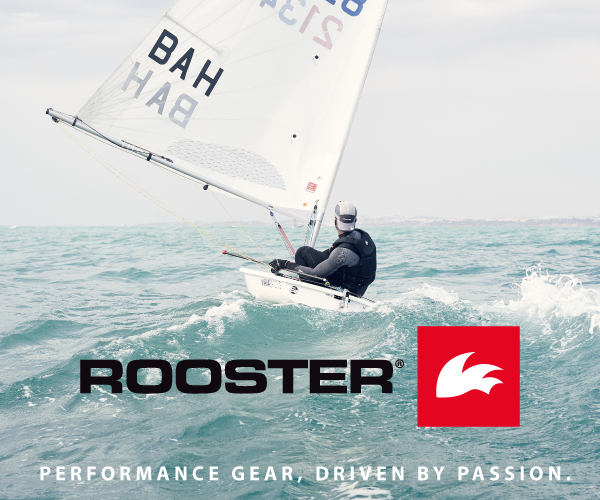
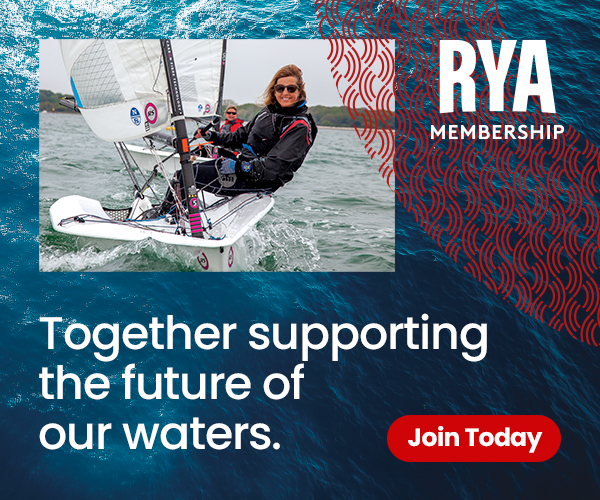
| Free mast for Merlin Rocket - has a bend! Guildford |
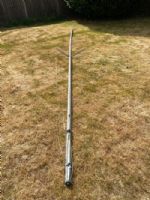 |
| Rossiter Pintail Mortagne sur Gironde, near Bordeaux |
 |
| Laser 140101 Tynemouth |
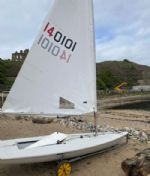 |
List classes of boat for sale |
Course Design |
Post Reply 
|
Page 12> |
| Author | |
redback 
Really should get out more 

Joined: 16 Mar 04 Location: Tunbridge Wells Online Status: Offline Posts: 1502 |
 Post Options Post Options
 Quote Quote  Reply Reply
 Topic: Course Design Topic: Course DesignPosted: 11 Oct 04 at 1:55pm |
|
With the growing numbers of assymetric boats courses need to be designed differently. There was a time when Race Officers would get out their handbearing compasses and set triangular course with reaches of one angle for Lasers and a different one for Wayfarers. At my club we still often have triangles which provided they are deep suits our assymetrics since it forces the boats that would run dead downwind (Lasers and Wayfarers) to cover the same sort of ground as the assymetrics. However for the really fast assymetric these reaches can sometimes be too tight and then we really suffer. Any enlightening observations out there? |
|
 |
|
redback 
Really should get out more 

Joined: 16 Mar 04 Location: Tunbridge Wells Online Status: Offline Posts: 1502 |
 Post Options Post Options
 Quote Quote  Reply Reply
 Posted: 11 Oct 04 at 9:43pm Posted: 11 Oct 04 at 9:43pm |
|
It makes me chuckle when the Lasers and conventional spinnaker boats at our club complain that a windward/leeward course is favouring the assymetrics. On the other hand I'm even more amused (and grateful) when we get a triangle and we can really blast past them all on a reach. I enjoy the windward/leewards since they are much more tactical than a reach or a dead run, but its very difficult to beat things like Wayfarers on handicap, especially if the wind is light. On the other hand we always do better on handicap when we have reaches. I sail a Laser 4000, poor on handicap when the winds are light, fantastic in a 4, and difficult to keep upright in a gusty 6. |
|
 |
|
iansmithofotley 
Far too distracted from work 
Joined: 16 Mar 04 Location: Otley, West Yorkshire Online Status: Offline Posts: 209 |
 Post Options Post Options
 Quote Quote  Reply Reply
 Posted: 11 Oct 04 at 10:30pm Posted: 11 Oct 04 at 10:30pm |
|
Hi Stewart, I think that alot depends on where you sail (sea, open water or restricted water), what type of racing you have (class racing or handicap racing), whether or not the sailing area allows for different courses (such as zig zagging around the cans, quadrilateral, triangle, windward/leeward, etc.), whether or not you have sufficient numbers of knowledgable race officers who can cope (at my club, race officers are often windsurfers who have never raced or sailed dinghies before or have any interest in them and struggle in all aspects of basic race officer duties) and also the classes of boats which are racing (one sail, two sail, three sail symmetric or three sail assymetric, and also one, two or three sail cats.). Until about twelve years ago, when the assymetric classes started to evolve and become popular (thanks to Laser, RS and Topper, besides the earlier stalwarts of the Int. 14's, Cherubs,etc.), many race officers were led to believe that courses should be set to test the abilities of the helm and crew on all points of sailing. Although you could never please everybody, all of the time, we seemed to cope. Nowadays, with the proliferation of the assymetric classes, particularly at clubs that have vast expanses of water, there appears to be a tendency to set either windward/leeward courses or courses with long very broad or dead runs. This is great stuff for the assymetrics and not bad for the symmetrics but not so good for the two sail boats and terrible for the una rigged boats. In class racing, I don't think it matters too much what course is sailed although it is enjoyable to sail courses which suit your class (broad courses for spinnaker boats and more reaching courses for one or two sail boats, notwithstanding that, on all courses, more overtaking takes place on beats and runs than on reaches). The main problem manifests itself in handicap racing. This type of racing is often the main type (possibly the only type) of racing in smaller clubs that sail on smaller areas of water and particularly where 'fleets' do not exist or are very small. Often, the racing fleet is an entire menagerie with no two boats being of the same class. Obviously, the courses selected to be sailed, by the race officer, will benefit certain classes, the yardstick numbers and the eventual finishing positions of the competitors, notwithstanding the wind strength, sailing conditions and the abilities of everyone racing. Unfortunately, in my (very humble) opinion, in handicap racing, it is impossible to set a course which is fair to all classes. In handicap racing, I suspect that the only way to try to keep everyone happy is to set courses that contain legs that cover all points of sailing, even though some of the assymetric crews will whinge on anything other than a windward/leeward course. I think that people who sail at clubs on the sea, or at places like Grafham or Rutland are very lucky, being able to set decent length courses, of any type. I realise that racers with boats with yardsticks of, say, less than PY1000, do not (usually) sail on 'puddles' but the problems are still there for boats such as the RS 200 and other similar speed assymetric boats and even the Merlins and Scorpions, etc., who, every week, are obliged to sail on smaller, restricted waters but still want the best courses for their class of boat. I think that being a race officer is a thankless task, no wonder so many people try to avoid the job. Often, the only satisfaction that you get is that you've done your bit for your club and your mates (and any visiting competitors), knowing in yourself that you've tried your best and done a good job and knowing in yourself that you have tried to be fair to all of the competitors. Hopefully, at your club's open meetings, the vote of thanks, that is usually given by the winner (or leading visitor), is justified and not just one of courtesy and protocol. How often have we heard these 'votes of thanks' when the courses have been terrible (often without a true beat), the start lines have been totally biased, too short or in the wrong place, or the general organisation has been a joke. Still, I suppose that it would be bad manners to say anything other than positives. Well Stewart, these are my observations. I haven't solved your problem because I don't think that there is a solution that would please all of the competitors in all of the different classes. Hopefully, other people will have opposite thoughts to myself and therefore open up the discussion. Ian (Yorkshire Dales S.C.) |
|
 |
|
redback 
Really should get out more 

Joined: 16 Mar 04 Location: Tunbridge Wells Online Status: Offline Posts: 1502 |
 Post Options Post Options
 Quote Quote  Reply Reply
 Posted: 12 Oct 04 at 6:04pm Posted: 12 Oct 04 at 6:04pm |
|
Hi Ian, I agree with so many of your points. Although it should be said (and I alluded to it before) that runs actually favour the Lasers and conventional spinnaker boats and reaches actually favour the assymetrics as long as they are not too tight. This is the opposite to most peoples' assumptions. I used to be a keen Laser competitor and can remember finding the reaches processional although I've noticed the less experienced like them. We are lucky at Bough Beech we have an excellent squad of Race Officers, all our races are started on the water, with mostly square lines and decent beats, so I'm not complaining. I was wondering if there are any views on different courses. I'm going to chuck my halfpenny worth in but in stages and see what results. Wait for my next post. |
|
 |
|
redback 
Really should get out more 

Joined: 16 Mar 04 Location: Tunbridge Wells Online Status: Offline Posts: 1502 |
 Post Options Post Options
 Quote Quote  Reply Reply
 Posted: 12 Oct 04 at 6:15pm Posted: 12 Oct 04 at 6:15pm |
|
Dangerous Courses Many of the assymetric boats have very poor visibility to leeward. Also they have to bear away dramatically when hit by a gust. This makes a course where they cross beating boats whilst on port, a potentially dangerous course. At one time at my club we used to use figure of eight courses so as to get 2 beats on our restricted water - this is now discouraged. It particularly scares me when I'm racing my Laser 4000, this is a relatively heavy boat which can reach speeds of 20 knots. Since inertia is proportional to the square of speed a collision involving a 4000 downwind could be fatal. |
|
 |
|
hurricane 
Really should get out more 

Joined: 15 Mar 04 Location: United Kingdom Online Status: Offline Posts: 1047 |
 Post Options Post Options
 Quote Quote  Reply Reply
 Posted: 12 Oct 04 at 6:28pm Posted: 12 Oct 04 at 6:28pm |
|
upwind downwind for cats that will do nicely thank you mr race officer!!!!
|
|
 |
|
bigwavedave 
Really should get out more 

Joined: 04 Jun 04 Location: United Kingdom Online Status: Offline Posts: 944 |
 Post Options Post Options
 Quote Quote  Reply Reply
 Posted: 12 Oct 04 at 7:40pm Posted: 12 Oct 04 at 7:40pm |
We're all particularly scared when your racing your Laser 4000
|
|

|
|
 |
|
Doctor Clifford 
Far too distracted from work 

Joined: 16 Mar 04 Location: Scotland Online Status: Offline Posts: 243 |
 Post Options Post Options
 Quote Quote  Reply Reply
 Posted: 13 Oct 04 at 8:24am Posted: 13 Oct 04 at 8:24am |
|
There was the famous regatta at Stonehaven YC a
couple of years ago where the Race Officer decided he would not listen to the competitors warnings. 120 boats, with a fast assymetric windward leeward (including cats) INSIDE a triangle for toppers and lasers etc of the same line. Seperate leeward marks for each fleet only two boat lengths apart with fast boats piling in (Force 4+) to one mark with lasers etc going dead down wind past it on both sides of it. Much talk of collisions in the bar! Many fleets don't plan to return under those circumstances, unsurprisingly! |
|
|
regards
Dr. Clifford take two tablets twice daily |
|
 |
|
Granite 
Far too distracted from work 

Joined: 12 May 04 Location: Scotland Online Status: Offline Posts: 476 |
 Post Options Post Options
 Quote Quote  Reply Reply
 Posted: 13 Oct 04 at 1:34pm Posted: 13 Oct 04 at 1:34pm |
|
A club where I sail starts the races from the shore and the first leg is often down wind due to local geography. I sail a fast asymetrick and it is not safe for me to start with the pack. As once I have put the kite up a 30 degree bearaway in a gust is a likely and unavoidable occurance. Trying to do that in a crowd of lasers and fireballs is not a good idea.
|
|
 |
|
ssailor 
Far too distracted from work 
Joined: 11 Oct 04 Location: United Kingdom Online Status: Offline Posts: 430 |
 Post Options Post Options
 Quote Quote  Reply Reply
 Posted: 16 Oct 04 at 11:08am Posted: 16 Oct 04 at 11:08am |
|
the only way of solving problems with handicaps is to be lucky enough to run two seperate courses - one for the handicap and one for the assymetrics - being a laser (pn 1078) sailor and a spice sailor (twin wire skiff - pn 930) these problems are well noticed! in the laser, boats like the RS400s (pn 952) are hard to beat as the courses tend to favor them however in the spice it tends to lack any tactical racing on a set course. about a month ago i raced at cardiff bay at the welsh sailing games in the spice, the race commitee decided to set the cats and flying fifteens and the fast handicap on the same course area as the assymetrics on adifferent shpaed course with the cats reaching from one mark to another across the downwind leg !- this combined with a heavy force 6 with squalls reading 7/8 provided some exciting racing with us going downwind with limited visibilty to leeward versus flying fifteens beating upwind and cats reaching across the downwind leg!!! prehaps going to the extent of towing the dinghys out of the bay and into the channel would of made a better idea where an open windward-leeward course could have been set, this should of been possible seeing as it was organised by the welsh yachting association!!
Edited by ssailor |
|
|
Any one in need of quality carbon fibre work (tillers etc) at decent prices!
Int 14 Gbr 1244 'Nucking Futs' The New Port rule!!. |
|
 |
|
Post Reply 
|
Page 12> |
| Forum Jump | Forum Permissions  You cannot post new topics in this forum You cannot reply to topics in this forum You cannot delete your posts in this forum You cannot edit your posts in this forum You cannot create polls in this forum You cannot vote in polls in this forum |
Copyright ©2001-2010 Web Wiz
Change your personal settings, or read our privacy policy











 Printable Version
Printable Version Delicious
Delicious Digg
Digg Facebook
Facebook Furl
Furl Google
Google MySpace
MySpace Newsvine
Newsvine reddit
reddit StumbleUpon
StumbleUpon Twitter
Twitter Windows Live
Windows Live Yahoo Bookmarks
Yahoo Bookmarks Topic Options
Topic Options
